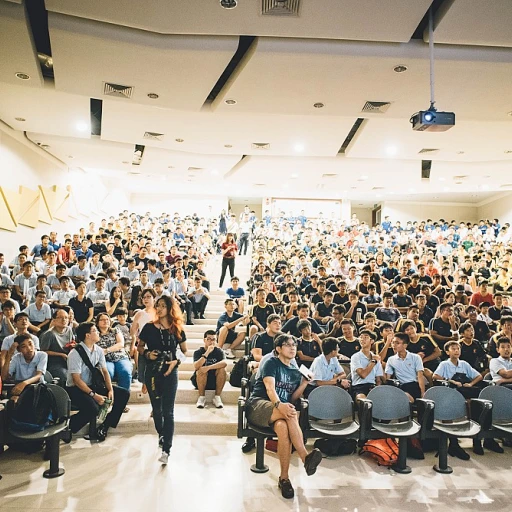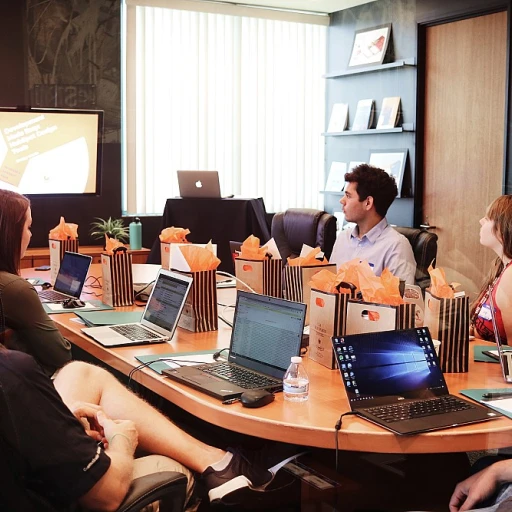
Understanding the Role of Performance Reviews in Remote Work
Evaluating Employee Progress in a Remote Setting
In the context of remote work, performance reviews serve as a critical tool for evaluating employee progress and enhancing productivity. As organizations adjust to long-distance work dynamics, these reviews offer insights that managers and employees can use to foster growth and achieve long-term goals.
Conducting regular performance evaluations helps managers identify specific areas of improvement and acknowledge accomplishments. In remote setups, understanding the nuances of employee performance is vital, as there is less opportunity for face-to-face interaction. This makes it crucial to rely more on structured performance evaluation processes and well-designed templates.
Performance review templates are designed to standardize the feedback mechanism, ensuring that the evaluation process is fair and objective. These templates guide managers in reviewing the performance of their employees by focusing on key areas such as skills, developmental needs, and overall contributions to the team. Effective review templates can include open-ended questions to extract in-depth feedback, allowing a comprehensive assessment of employee capabilities and challenges.
Implementing a template-driven review process can support continuous employee development. By creating clear guidelines, both employees and managers can have a structured understanding of the expectations and outcomes of the review. This structure is helpful in formulating constructive feedback that emphasizes performance improvement.
Remote managers should periodically review team member performances, considering both annual and quarterly performance evaluations. This regular analysis enables ongoing goal setting and ensures that employees remain aligned with the company's vision.
Key Elements of Effective Performance Review Templates
Crucial Components for Evaluating Employee Performance Remotely
Creating an effective performance review template is essential for evaluating employee performance in a remote work environment. Templates play a crucial role in providing a consistent, structured approach to assessing how well employees meet their goals and contribute to the team. Here are some key elements to consider when crafting templates for remote employee evaluations. Clear Objectives and Goals An efficient performance review process begins with setting clear and attainable goals for employees. These objectives serve as a guide to measure an employee's success throughout the review period, be it annual or quarterly. Including specific goals in the review template offers both managers and employees a reference point when discussing performance. Structured Evaluation Form A well-designed evaluation form ensures all necessary aspects of employee performance are covered. Templates should separate competencies into various areas such as skills, work quality, and team collaboration. This structure helps focus discussions on areas for improvement and advancement. Open-Ended Questions for In-Depth Feedback Including open-ended questions within the evaluation template encourages more comprehensive feedback. This approach allows managers to provide constructive feedback and allows employees to reflect on their performance deeply. Consistent Review Process Templates should support a consistent review process, which is particularly vital for remote teams. Standardized review templates ensure all team members are evaluated equitably, minimizing bias and fostering a fair work culture. Development and Improvement Focus The performance review template should promote ongoing development. Highlighting areas for growth and mapping out development plans can lead to improved employee performance. Furthermore, constructive employee evaluations help establish a positive cycle of continuous improvement. Creating a comprehensive performance review template designed for remote work settings can vastly improve the evaluation experience. By incorporating the right elements, organizations can facilitate a more meaningful review process. For additional guidance, consider these effective strategies for managing offshore teams.Adapting Performance Review Templates for Remote Work
Customizing Templates for the Remote Environment
In the remote work landscape, adapting performance review templates is crucial to ensure they cater to the unique challenges and opportunities that remote teams face. Traditional evaluation forms often don't account for the nuances of remote work dynamics, making it important to tailor templates that reflect these specific contexts. One of the core adaptations involves highlighting clear and realistic goals. Physical distance can sometimes lead to ambiguous expectations, so a robust evaluation template designed for remote employees should prioritize setting clearly defined, measurable objectives. This ensures that employees know exactly what the targets are throughout the review period. Emphasizing Flexibility and Open-ended Feedback Remote performance reviews benefit significantly from flexibility. While annual performance evaluations remain essential, integrating more frequent, open-ended feedback sessions can enhance the overall development process. Quarterly performance reviews, for instance, allow for a more agile approach in addressing areas of improvement and achieving employee goals. An effective performance evaluation in a remote setting also needs to focus on team interactions and collaboration skills, as these elements become pivotal when team members are dispersed. Including areas like communication effectiveness, adaptability to remote tools, and self-motivation can provide a more comprehensive employee evaluation. Utilizing the Right Tools for Template Adaptation The integration of digital tools and technologies is another vital aspect of adapting performance review templates. Utilizing platforms that offer seamless template download and customization options can simplify the review process for managers and employees alike. Additionally, using specialized remote work tools helps in efficiently tracking performance metrics and facilitating easier feedback exchanges. Customizing templates for remote performance reviews is not just about tackling challenges, but also about leveraging opportunities to promote continuous improvement in employee performance. By making these strategic changes, managers can ensure that the performance review process is constructive, supportive, and aligned with the unique demands of remote work. For more insights on optimizing the remote working environment, visit our article on navigating remote work tools.Best Practices for Conducting Remote Performance Reviews
Guidelines for Effective Remote Performance Assessments
Conducting performance evaluations in a remote environment requires a tailored approach to ensure effectiveness and transparency. To facilitate an open and constructive feedback process, here are some best practices to consider:- Preparation and Clear Communication: Preparation is key to any successful performance review. Managers should provide employees with the evaluation template well before the review day. This allows employees to reflect on their achievements and areas for improvement, entering the review period with a clear understanding of their goals.
- Utilizing Structured Templates: Using a well-designed review template can help maintain consistency and focus the discourse on essential aspects of employee performance. A comprehensive evaluation form should include sections for employee review, development goals, and areas improvement. A template designed for remote settings will help capture relevant data over the year.
- Encouraging Open-ended Feedback: Open-ended sections within review templates allow for more candid feedback, fostering a atmosphere of trust and motivation. This feedback provides valuable insights into team dynamics and potential skills development areas.
- Regular Check-ins: While annual performance reviews are traditional, incorporating quarterly performance assessments offers timely feedback, enabling employees to make real-time adjustments rather than waiting for the end of the year.
- Focusing on Development: During reviews, prioritizing employee development over mere evaluation promotes a culture of continuous improvement and growth. Discussing potential training opportunities and career progression with employees can boost morale and engagement.
Tools and Technologies to Facilitate Remote Performance Reviews
Streamlining Remote Performance Reviews with Technology
Using the right tools and technologies can make remote performance reviews not just possible, but effective and engaging. With these resources, managers and employees alike can navigate the evaluation process smoothly. Firstly, adopting cloud-based performance review templates can help maintain consistency and allow for easy access for both managers and employees. These templates are designed to capture key information and support streamlined evaluations. Secondly, many platforms offer robust feedback mechanisms. This enables managers to provide constructive feedback effectively, utilizing performance reviews to set clear goals and areas for improvement. These tools often support open-ended responses, which can be critical for a well-rounded evaluation. A crucial aspect of remote performance reviews is the capacity for real-time feedback. Tools that allow for ongoing communication between review periods foster a culture of continuous improvement and development, helping address areas that need attention before the annual performance review comes around. Incorporating video conferencing tools can also enhance the review process. Face-to-face virtual meetings ensure that the feedback is communicated clearly and constructively, supporting both verbal and non-verbal cues that can be lost through written communication alone. Moreover, automated reminders and scheduling tools can facilitate regular and timely reviews, ensuring that neither parties miss out on crucial discussions aimed at employee development and growth. This year, more emphasis is placed on schedules aligning with quarterly performance reviews to maintain consistency and timely evaluations. Overall, when the right technology supports well-designed review templates, it becomes significantly easier for managers and employees to conduct thorough, engaging, and constructive performance evaluations that contribute to individual and team success.Addressing Common Challenges in Remote Performance Reviews
Overcoming Hurdles in Remote Performance Evaluations
Remote performance reviews can face several common challenges that managers and employees should be prepared to tackle. These hurdles can include communication barriers, lack of clear feedback, or difficulty in setting goals that align with both individual and team objectives. Here’s a closer look at some of these challenges and ways to address them.- Communication Barriers: In a remote work environment, often employees and managers rely heavily on digital communication channels, which can sometimes lead to misunderstandings or misalignment of expectations. To combat this, setting up regular, structured meetings helps ensure ongoing dialogue and opportunity for open-ended discussions.
- Providing Constructive Feedback: It can be challenging to provide timely and constructive feedback remotely. Utilizing performance review templates can assist in structuring evaluations, making sure essential feedback is delivered effectively. Remember to focus on clear, action-oriented feedback that helps employees understand areas improvement.
- Setting and Aligning Goals: Goals in a remote setting can sometimes feel disconnected from daily tasks. It’s important to ensure that goals discussed during performance evaluations are aligned with the overarching objectives of the team and organization. Use evaluation forms to set goals that promote year-round employee development and improvement.
- Ensuring Fair and Objective Evaluation: Remote performance reviews might lack the personal interaction that can lend context to an employee’s performance. Utilizing consistent evaluation criteria and templates designed for objectivity can aid in reducing biases and maintaining fairness in assessments. Accessing template downloads that have been tailored to remote work can help maintain this consistency.
- Building Trust: Ensuring an effective performance review process in a remote setting involves fostering mutual trust. Employees need to trust that their evaluations are solely based on their skills and contributions, while managers need to feel confident that employees will meet performance expectations.












